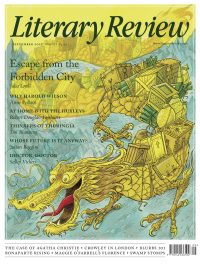Mark Almond
Passports Please
The Edge of the Plain: How Borders Make and Break Our World
By James Crawford
Canongate 422pp £20
In his new book, James Crawford sets out to challenge the glib assumptions behind phrases like ‘good fences make good neighbours’ and geopolitical nostrums like ‘if states had “natural boundaries” along rivers or mountain ranges, wars would be far less common’. From his yomp across glaciers searching for the watershed in the Dolomites that separates Italy from Austria to his forays into the Middle East and travels along the Mexico–USA frontier, Crawford finds borders more difficult to define and less conducive to what their architects intended than we might think.
But he also finds charm in delineation. In his native Scotland, he follows the route of the Antonine Wall, which wasn’t made of stone like its southern counterpart built by Hadrian. What the turf wall built by Hadrian’s successor lacked in durability, it made up for in carved stone markers unprecedented along the Roman Empire’s borders. Did the Romans finally recognise that their empire had reached its limits and want them commemorated forever – or at least to be found in situ by archaeologists in a barely conceivable remote future?
Vanished boundaries exert a fascination. Crawford notes the fad for collecting graffitied bits of the Berlin Wall after its collapse. The eastern side had been too dangerous to graffiti before 9 November 1989, but after that day the Ossies, newly filled with free-market zeal, spray-painted their dull grey

Sign Up to our newsletter
Receive free articles, highlights from the archive, news, details of prizes, and much more.@Lit_Review
Follow Literary Review on Twitter
Twitter Feed
How to ruin a film - a short guide by @TWHodgkinson:
Thomas W Hodgkinson - There Was No Sorcerer
Thomas W Hodgkinson: There Was No Sorcerer - Box Office Poison: Hollywood’s Story in a Century of Flops by Tim Robey
literaryreview.co.uk
How to ruin a film - a short guide by @TWHodgkinson:
Thomas W Hodgkinson - There Was No Sorcerer
Thomas W Hodgkinson: There Was No Sorcerer - Box Office Poison: Hollywood’s Story in a Century of Flops by Tim Robey
literaryreview.co.uk
Give the gift that lasts all year with a subscription to Literary Review. Save up to 35% on the cover price when you visit us at https://literaryreview.co.uk/subscribe and enter the code 'XMAS24'